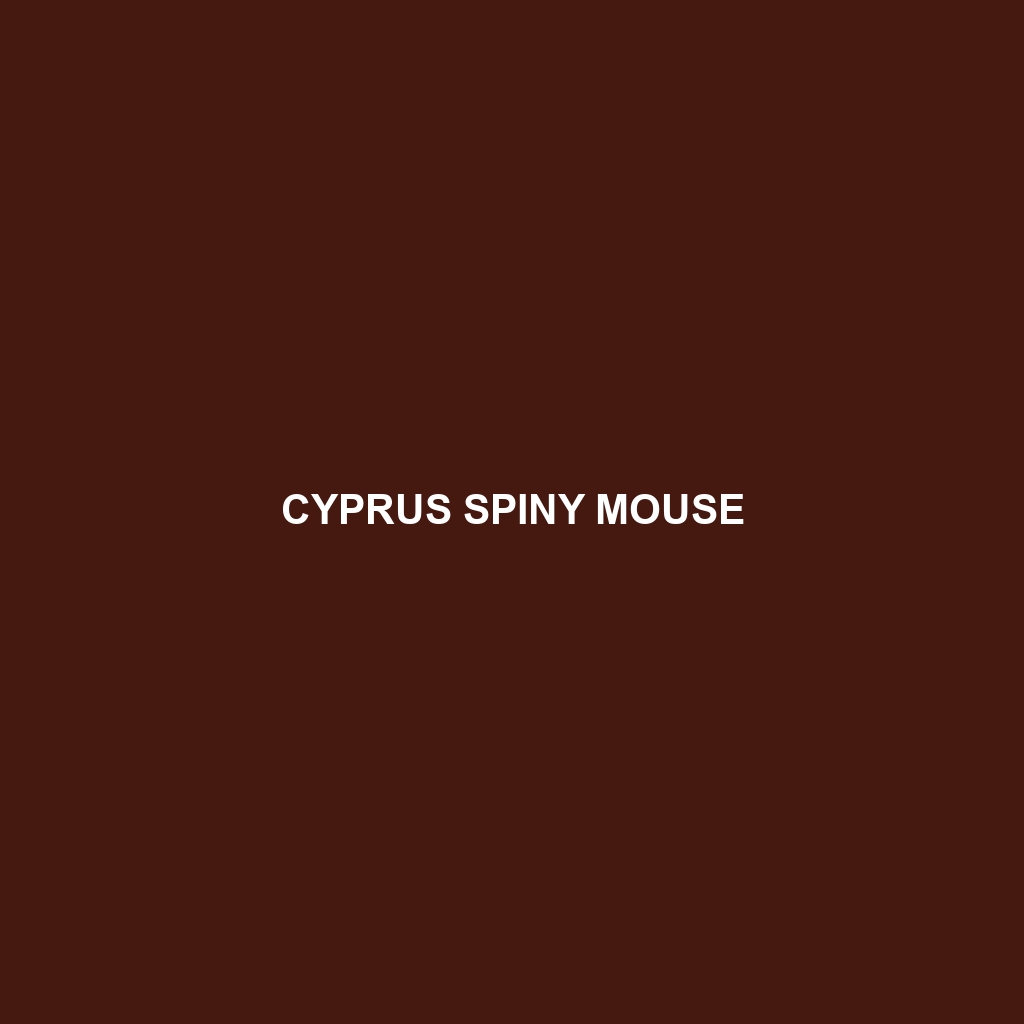Cyprus Spiny Mouse: A Comprehensive Overview
Common Name: Cyprus Spiny Mouse
Scientific Name: Mus spicilegus
Habitat
The Cyprus Spiny Mouse, primarily found in the unique landscapes of Cyprus, thrives in scrubland, semi-arid regions, and areas dotted with rocky terrains. These mice are typically located in hilly environments and forested areas, where they favor dense vegetation that provides shelter and food sources. This species has adapted well to the Mediterranean climate, making it a notable inhabitant of the island.
Physical Characteristics
The Cyprus Spiny Mouse is a small rodent that typically measures around 8 to 12 cm in body length, with an additional tail length of approximately 7 to 10 cm. Its fur is generally a mix of brown and gray shades, providing effective camouflage against its natural habitat. Distinctive features include spiny fur, which is made up of stiff guard hairs, and relatively large ears, which contribute to its acute sense of hearing. This combination of traits makes the Cyprus Spiny Mouse easily recognizable among other desert rodents.
Behavior
The Cyprus Spiny Mouse exhibits primarily nocturnal behavior, making it active during the night. These rodents are highly social and often live in small family groups or colonies, which can significantly impact their survival and foraging strategies. Their agility allows them to navigate through the rocky terrains effortlessly, while their social structures aid in the protection against predators. Additionally, they are known for their remarkable climbing abilities, often seeking food in elevated areas.
Diet
The feeding habits of the Cyprus Spiny Mouse are varied, as they are opportunistic foragers. Their diet typically consists of seeds, fruits, nuts, and various plant materials. In addition to plant matter, they may occasionally consume insects and other small invertebrates, contributing to a balanced nutritional intake. Their ability to adapt their diet according to seasonal availability is essential for their survival in the wild.
Reproduction
Cyprus Spiny Mice breed during the warmer months, with a peak breeding season occurring in spring and summer. Females give birth to litters consisting of two to six offspring, typically after a gestation period of about 20 days. The young mice are born blind and hairless but develop rapidly, becoming independent within a few weeks. Parental care is shared among the family group, providing a supportive environment for the young.
Conservation Status
The current conservation status of the Cyprus Spiny Mouse is classified as “Least Concern” according to the International Union for Conservation of Nature (IUCN). However, habitat loss due to urban development and agricultural expansion poses potential threats to this species, necessitating ongoing monitoring to ensure their populations remain stable.
Interesting Facts
One fascinating fact about the Cyprus Spiny Mouse is its ability to survive in extremely arid conditions due to its efficient water retention and foraging strategies. Additionally, these mice are known for their territorial behaviors, often marking their territory using scent to ward off intruders.
Role in Ecosystem
The Cyprus Spiny Mouse plays a crucial role in its ecosystem as both a herbivore and prey for various predators. By consuming seeds and plants, they contribute to the dispersal of plant species, aiding in the maintenance of vegetation diversity. Their position in the food chain is vital, as they provide nourishment for birds of prey, foxes, and snakes, helping to sustain the natural balance within their environment.
